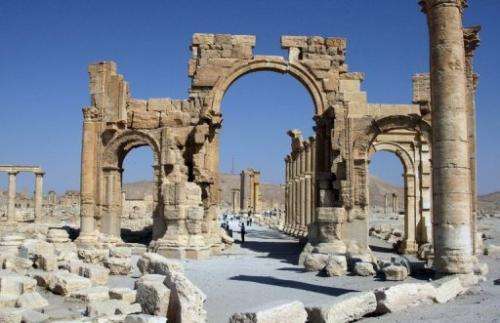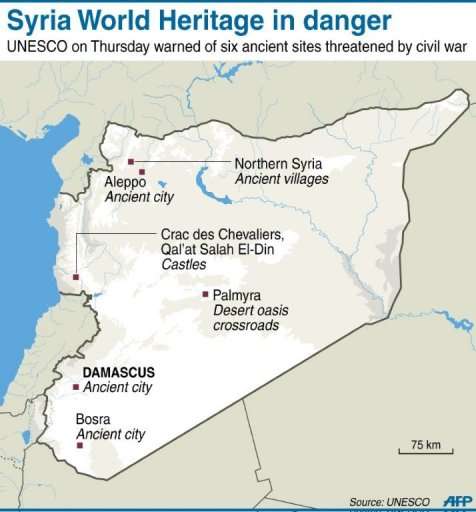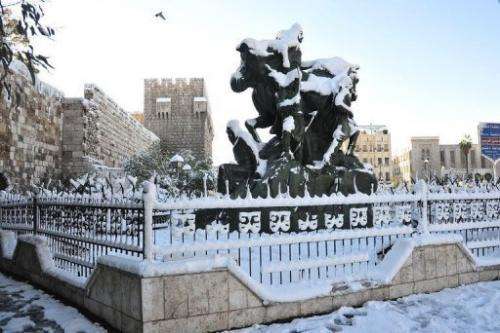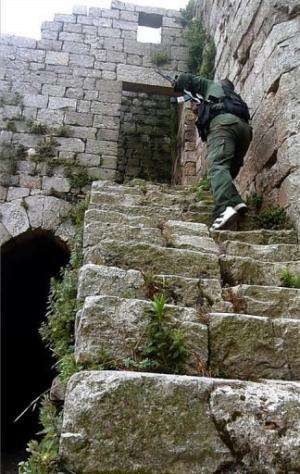UNESCO warns Syrian heritage sites endangered

UNESCO on Thursday added six ancient sites in Syria including a fortress of Saladin and a Crusader castle to the endangered World Heritage list, warning that more than two years of civil war had inflicted heavy damage.
"Due to the armed conflict situation in Syria, the conditions are no longer present to ensure the conservation and protection of the Outstanding Universal Value of the six World Heritage properties," UNESCO said.
Syria has six World Heritage Sites: the ancient cities of Damascus, Bosra and Aleppo, the oasis of Palmyra, the castles of Crac des Chevaliers and Qal'at Salah El-Din—which counts as one site—and the ancient villages of northern Syria.
All six were placed on the list of World Heritage in Danger by the United Nations Educational, Scientific and Cultural Organization committee at its annual meeting in Phnom Penh.
"The decision is meant to rally support for the safeguarding of the sites," UNESCO spokesman Roni Amelan told AFP.
Members also supported a French proposal calling for a special fund to help conserve World Heritage properties in Syria.
Experts say fierce fighting and deteriorating security have left the country's extraordinary archaeological heritage susceptible to damage and looting.

UNESCO said its information on the scale of the destruction was "partial" and came from unverified sources including social media and a report from Syrian authorities which it said "does not necessarily reflect the actual situation".
Aleppo's old city, in particular, has "witnessed some of the conflict's most brutal destruction," it said, adding that the old citadel had been "caught in the line of fire".
In April, the minaret of Aleppo's ancient Umayyad mosque—originally built in the 8th century and then rebuilt in the 13th century—was totally destroyed.
"The immediate, near-term and long-term effect of the crises on the cultural heritage of Aleppo cannot be overstated," UNESCO said.

There are also fears for two castles considered architectural treasures of the period of the Crusades in the 11th-13th centuries.
Crac des Chevaliers and Qal'at Salah El-Din (Fortress of Saladin) have "been exposed to clashing and gunfire," according to a report by Syrian authorities given to UNESCO. Saladin was the Kurdish military leader who recaptured Jerusalem from the Crusaders in the 12th century and is lionised across the Middle East.
Referring to Crac des Chevaliers, the report said: "We think that the ancient mosque (the chapel) in the centre of the citadel, which still retained traces of original paintwork, has been damaged."
Clandestine excavations, including looting of ancient tombs and grave sites, have also been reported at several of the sites, it added.
In February, at least 18 ancient mosaics depicting scenes from Homer's "The Odyssey" were stolen during illegal excavations on archaeological sites in the war-torn country's northeast, the country's culture minister said at the time.

UNESCO launched an appeal to Syria's neighbours and the international community to fight illicit trafficking of cultural property coming from Syria.
Since the fighting began, UNESCO has repeatedly called on all parties to the conflict to preserve the country's cultural heritage.
More than 93,000 people, including at least 6,500 children, have been killed since the outbreak of civil war in Syria in March 2011, the UN announced last week in a report that highlighted a surge in the number of deaths each month.
© 2013 AFP



















